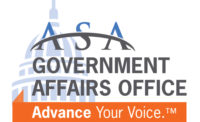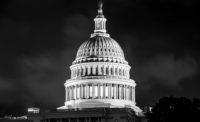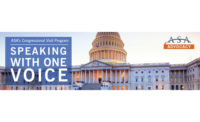COVID-19 relief
The American Rescue Plan was signed into law on March 11th.
Congress
- Partisan tensions continue to rise in Congress after the passage after the coronavirus relief plan last week.
- Republicans in the Senate have continued to challenge their colleagues from the other side of the aisle when it comes to the time honored, Senate tradition of the filibuster.
- On Tuesday, Minority Leader Mitch McConnell (R-KY) warned Senate Democrats that if they try to implement further limitations on the filibuster, Republicans could resort to procedural techniques that will essentially bring the Senate to a halt. For the Senate to function on a day-to-day basis, it relies on unanimous consent (UC) to handle non-partisan/non-controversial legislation and procedure. Much of the time, the Senate chamber is empty, save for the Senate President, essential staff and Senators who are on the floor to speak or to vote.
- Should changes to the filibuster be made (including the requirement that a Senator stay on the floor and continue talking in order to keep their time), Senate Republicans could retaliate by requiring a quorum for any action on the floor – meaning that Senators would need to be physically present for the chamber to function, even for the most menial tasks.
- Also, Republicans could require that all bills be read in their entirety on the floor before a vote or prevent the Senate from starting any business before Noon.
- As we have seen, Vice President Kamala Harris has been critical to legislation being passed with a 50-50 split in the Senate. However, when it comes to procedure, the Vice President does not have a vote in these matters.
- Why is this important? Democrats are determined to pass as many of their priorities before the 2022 mid-term elections. Since the American Rescue Plan contained some non-COVID related priorities, Republicans are concerned about what they see as “Trojan Horses” that will be called one thing but contain another. Especially when it comes to tax increases – which they remain opposed to.
- Right now, Republicans in both chambers are anticipating what will be included in the upcoming infrastructure legislation. This is anticipated to include $2-4 billion in spending and may contain tax increases within the bill itself. It is expected the infrastructure bill will used budget reconciliation to pass as many of the provisions as possible, without facing the danger of a filibuster.
White House
President Biden and Vice President Harris are on the road this week – in Pennsylvania and Colorado/Nevada respectively, to discuss the passage of the American Rescue Plan, as well as promote support for the upcoming infrastructure bill.
Cabinet
- Rep. Deb Haaland (D-NM) made history as the first Native American ever to hold a Cabinet position with her confirmation as Secretary of the Interior. With Secretary Haaland’s resignation from the House on Wednesday, Speaker Pelosi holds a slim 219-211 majority.
- History was also made last week, as Michael Regan was confirmed as the first African-American man to head the Environmental Protection Agency.
Letters
ASA joined its coalition allies in signing two letters:
- The first letter, to Commerce Secretary Gina Raimondo, requested a review of the lumber supply chain (due to lumber prices skyrocketing 180% since the beginning of the year).
- The second letter urged Congressional leaders to extend the deadline for PPP applications, as this was not included in the American Rescue Plan (About $92.5 billion in PPP loan funds remain available). NOTE: The House passed a bill reflecting this on Tuesday, extending the deadline for two months. It is expected to pass quickly in the Senate.
OSHA
OSHA launches program to protect high-risk workers from coronavirus, focuses on employers that retaliate against workers with safety concerns:
In response to President Biden's executive order on protecting worker health and safety, the U.S. Department of Labor's Occupational Safety and Health Administration has launched a national emphasis program focusing enforcement efforts on companies that put the largest number of workers at serious risk of contracting the coronavirus. The program also prioritizes employers that retaliate against workers for complaints about unsafe or unhealthy conditions, or for exercising other rights protected by federal law.
"This deadly pandemic has taken a staggering toll on U.S. workers and their families. We have a moral obligation to do what we can to protect workers, especially for the many who have no other protection," said Principal Deputy Assistant Secretary of Labor for Occupational Safety and Health Jim Frederick. "This program seeks to substantially reduce or eliminate coronavirus exposure for workers in companies where risks are high, and to protect workers who raise concerns that their employer is failing to protect them from the risks of exposure."
NEP inspections will enhance the agency’s previous coronavirus enforcement efforts, and will include some follow-up inspections of worksites inspected in 2020. The program’s focused strategy ensures abatement and includes monitoring the effectiveness of OSHA’s enforcement and guidance efforts. The program will remain in effect for up to one year from its issuance date, though OSHA has the flexibility to amend or cancel the program as the pandemic subsides.
"With more people being vaccinated and the number of infections trending down, we know there is light at the end of the tunnel. But until we are past this pandemic workers deserve a Labor Department that is looking out for their health," added Frederick.
OSHA state plans have adopted varying requirements to protect employees from coronavirus, and OSHA knows many of them have implemented enforcement programs similar to this NEP. While it does not require it, OSHA strongly encourages the rest to adopt this NEP. State plans must notify federal OSHA of their intention to adopt the NEP within 60 days after its issuance.
In a related action, OSHA has also updated its Interim Enforcement Response Plan to prioritize the use of on-site workplace inspections where practical, or a combination of on-site and remote methods. OSHA will only use remote-only inspections if the agency determines that on-site inspections cannot be performed safely. On March 18, 2021, OSHA will rescind the May 26, 2020, memorandum on this topic and this new guidance will go into and remain in effect until further notice.
OSHA will ensure that its Compliance Safety and Health Officers have every protection necessary for onsite inspections. When conducting on-site inspections, OSHA will evaluate all risk and utilize appropriate protective measures, including appropriate respiratory protection and other necessary personal protective equipment.
Under the Occupational Safety and Health Act of 1970, employers are responsible for providing safe and healthful workplaces for their employees. OSHA's role is to help ensure these conditions for America's working men and women by setting and enforcing standards, and providing training, education and assistance. under the Occupational Safety and Health Act.
For individual state legislation tracking, visit ASA's web-based state legislation tracker here.






